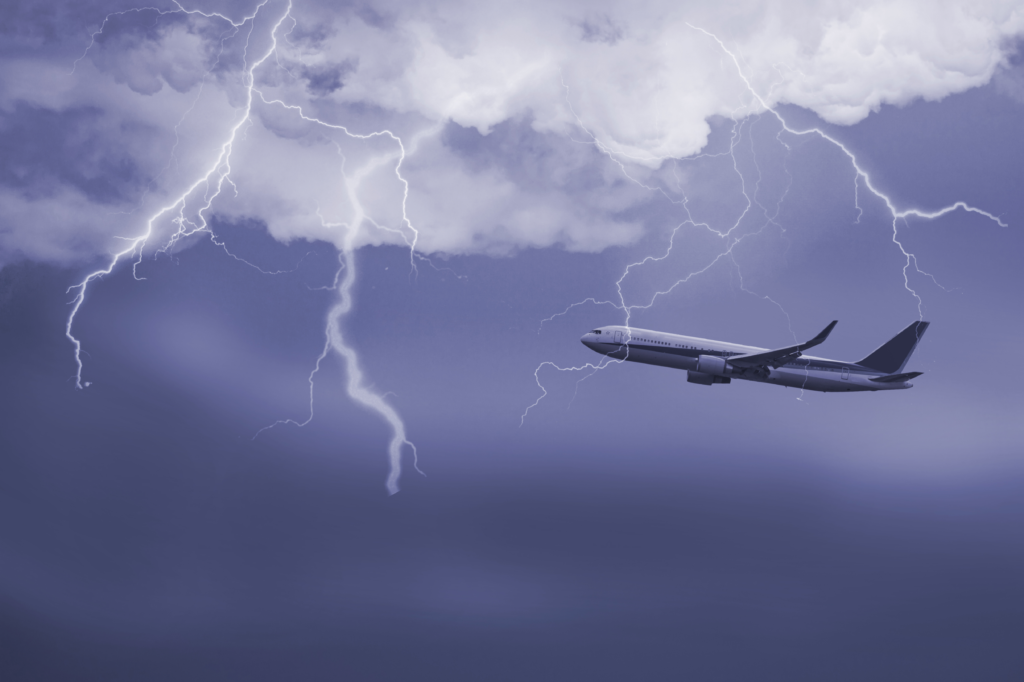Aerospace innovator successfully meets DO-160 Level 5 requirements in preliminary testing procedures. Product qualification testing to follow.
 Burbank, CA – October 31, 2016 — Hydra-Electric Company, a provider of breakthrough technology in sensors and switches for the aerospace industry, announced that its latest sensor designs have successfully performed preliminary testing of lightning susceptibility in accordance with the highest defined levels of DO-160. The Company is exhibiting at the 2016 National Business Aviation Association – Business Aviation Convention & Exhibition (NBAA-BACE).
Burbank, CA – October 31, 2016 — Hydra-Electric Company, a provider of breakthrough technology in sensors and switches for the aerospace industry, announced that its latest sensor designs have successfully performed preliminary testing of lightning susceptibility in accordance with the highest defined levels of DO-160. The Company is exhibiting at the 2016 National Business Aviation Association – Business Aviation Convention & Exhibition (NBAA-BACE).
Lightning presents a frequent and inevitable risk to aircraft. It is estimated that in-flight aircraft are struck by lightning approximately once every 1,000 flight hours. All electronic or electrical systems in an aircraft must go through a rigorous process to determine if any lightning induced failure may create a risk to the aircraft. The most widely referenced test specification in the military and aerospace industries for determining “Lightning Induced Transient Susceptibility” is RTCA DO-160, Section 22.
RTCA (Radio Technical Commission for Aeronautics) is a private, not-for-profit association chartered by the FAA to operate federal advisory committees and generate minimum performance standards for CNS/ATM (Communications, Navigation, Surveillance / Air Traffic Management) systems and equipment. RTCA’s DO-160, Section 22 outlines the different test levels and corresponding design level considerations. Level 5 involves the most severe electromagnetic environment.
The new sensor designs from Hydra-Electric that can withstand the most severe lightning environments offer critical advantages for landing gear systems and systems in other unprotected regions of an aircraft. Additionally, usage of this latest technology elsewhere in the aircraft simplifies matters because system designers can be certain that lightning susceptibility will not be an issue.
“We know of no other sensor technology on the market that can meet this highest level of lightning protection defined per DO-160,” said Bob Guziak, Director of Sensor Engineering at Hydra-Electric. “Hydra’s technology will make a real difference for critical systems in unprotected areas of an aircraft. We look forward to the product qualification testing in early 2017.”
Hydra-Electric is currently accepting RFIs for sensor designs that can withstand DO-160 Level 5 requirements. Like Hydra-Electric’s other current offerings of transducer products, the newest designs provide for linear accuracy over the entire pressure and temperature spectrum. These products also allow the ability to tailor the sensor to any operating parameter (e.g., accuracy, sensitivity, output format, input/output impedance, amplified vs. non-amplified, etc.).
Visitors to NBAA can find Hydra-Electric exhibiting at Booth 3737. Meetings with Hydra-Electric can be scheduled by making an appointment at hydraelectric.com/visit-us-at-nbaa/. Copies of the Company’s white papers will be available in the booth and can also be downloaded electronically at www.hydraelectric.com/wp.


